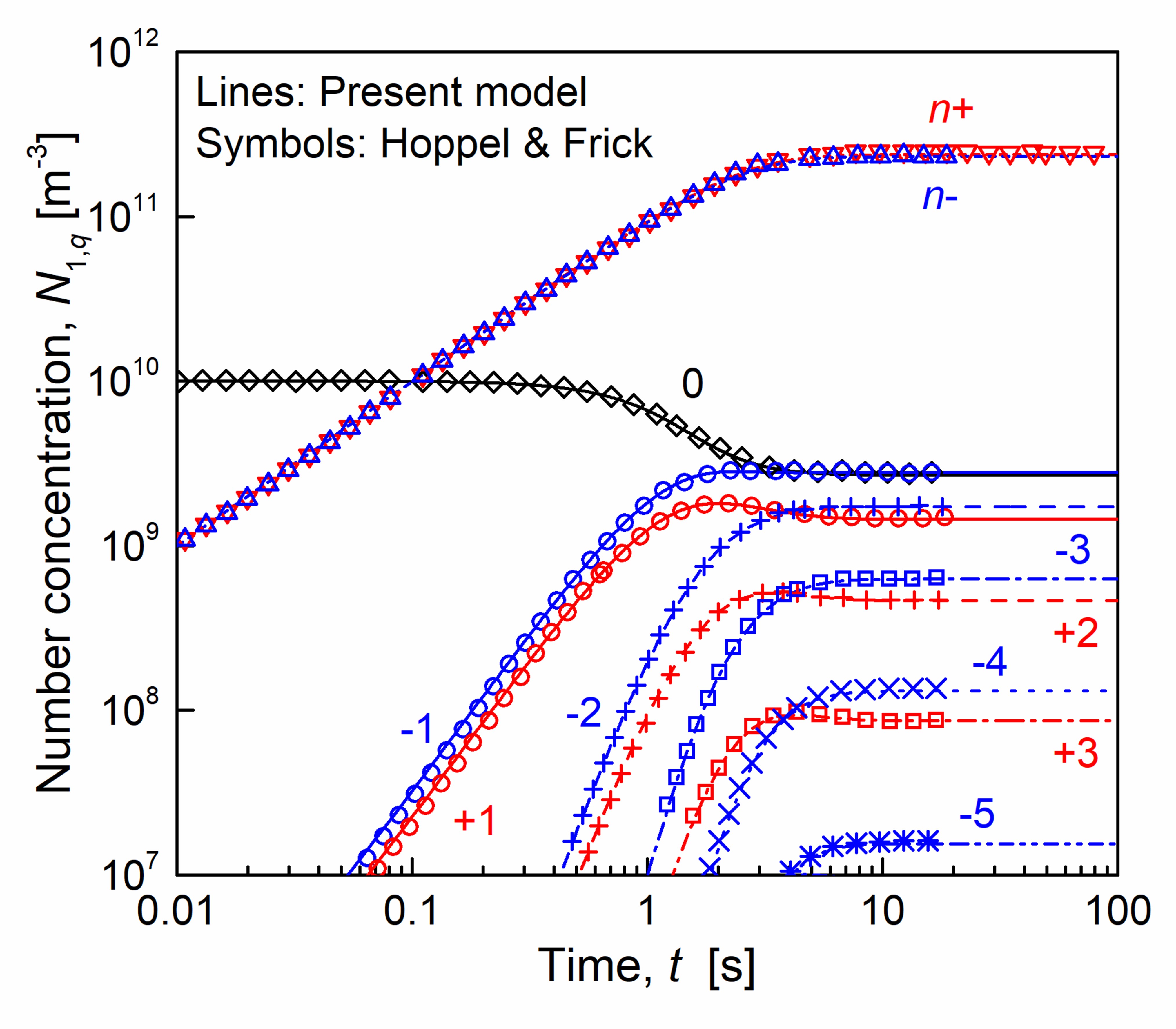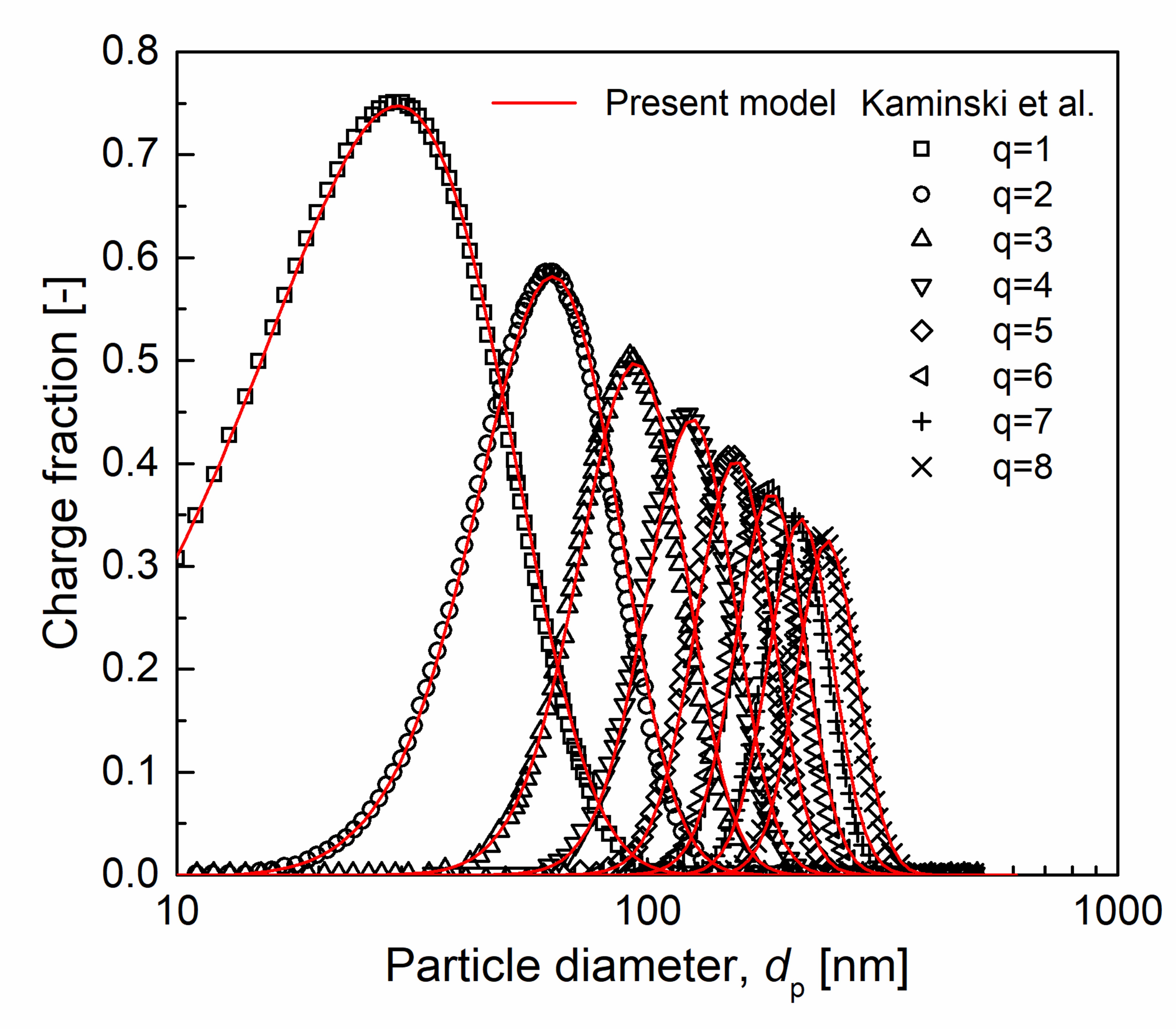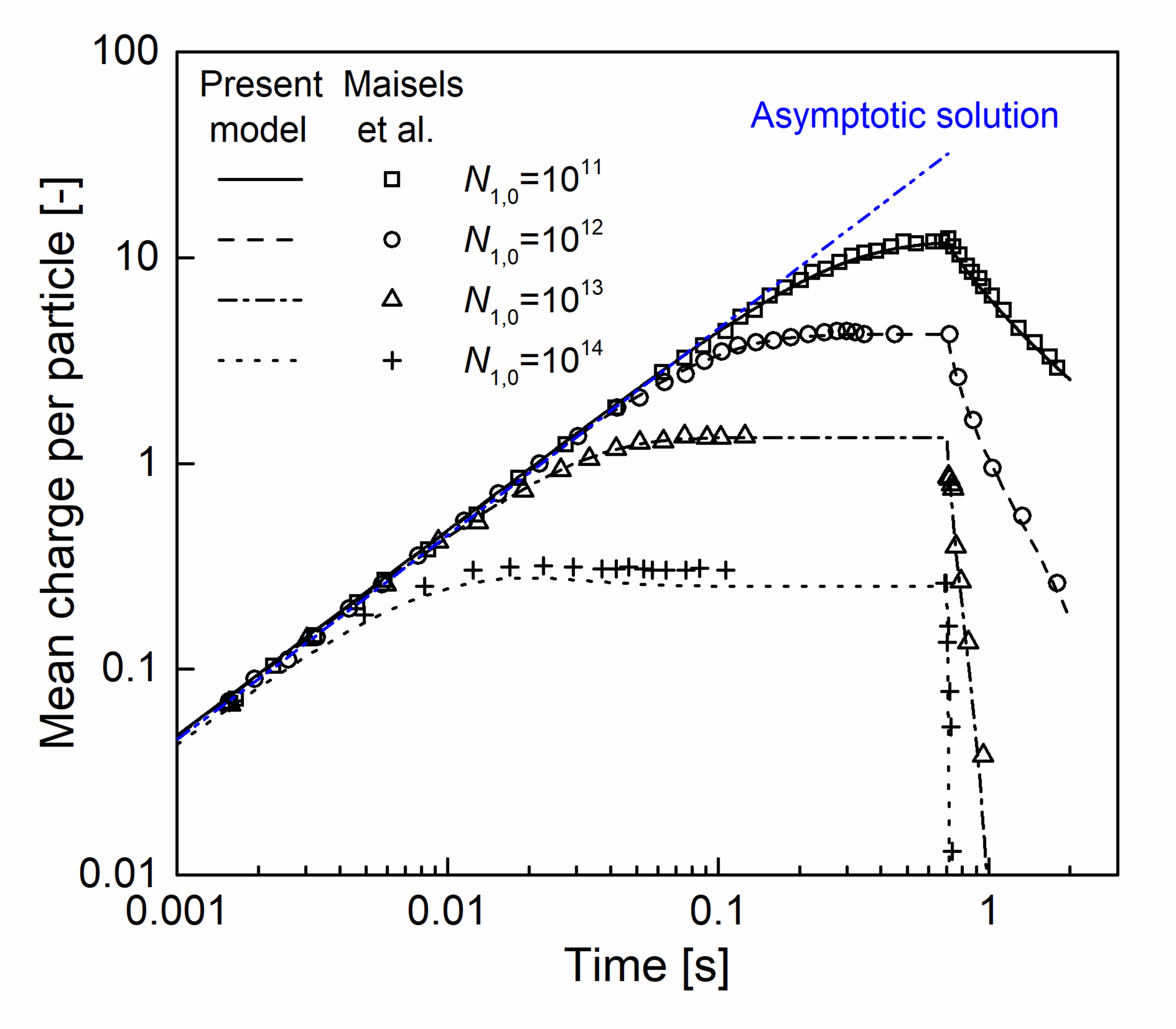Electric charging is one of the essential aerosol dynamic mechanisms and may be harnessed for detection, capture and control of ultrafine aerosol particles in a range of devices.
Here, we host an open-source three-dimensional (3-D) model consisting of more than 200 particle transport equations for discrete charge states and polydisperse sizes coupled with ion conservation equations in the framework of OpenFOAM.
Three test cases are introduced to verify implementation of three charging models by comparison with published literature: bipolar and unipolar diffusion charging, and photoelectric charging.
By following the 'Get Started' and 'Tutorial Instructions', within a few minutes, you should be able to generate the plots to compare with the following plots (Woo et al., 2022) for:
Bipolar Diffusion Charging
Unipolar Diffusion Charging
Photoelectric Charging
References
Woo, M., Schriefl, M.A., Knoll, M., Boies, A.M., Stettler, M.E.J., Hochgreb, S., and Nishida, R.T. (2022). Open-source modelling of aerosol dynamics and computational fluid dynamics: bipolar and unipolar diffusion charging and photoelectric charging. Computer Physics Communications, 278, 108399.
Nishida, R. T., Yamasaki, N. M., Schriefl, M. A., Boies, A. M., & Hochgreb, S. (2019). Modelling the effect of aerosol polydispersity on unipolar charging and measurement in low-cost sensors. Journal of Aerosol Science, 130, 10-21.
Nishida, R. T., Boies, A. M., & Hochgreb, S. (2018). Measuring ultrafine aerosols by direct photoionization and charge capture in continuous flow. Aerosol Science and Technology, 52(5), 546-556.
Nishida, R. T., Boies, A. M., & Hochgreb, S. (2017). Modelling of direct ultraviolet photoionization and charge recombination of aerosol nanoparticles in continuous flow. Journal of Applied Physics, 121(2), 023104.


